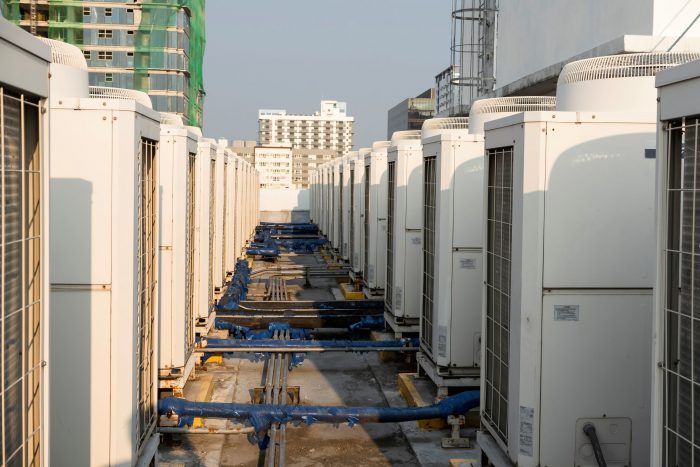Matt Blocker, Zondits guest, 8/22/2023
Matt is Senior Manager of Commercial Product Development at Mitsubishi Electric Trane HVAC US.
With threats from climate change increasing rapidly, everything feasible must be done to reduce emissions of greenhouse gases. The HVAC industry plays an important role in these efforts. Changes in refrigerants for commercial HVAC systems are coming in 2026, and the performance of variable refrigerant flow (VRF) heat pump systems continue to improve. Both will help with worldwide decarbonization efforts.
Recognizing the impact the built environment has on the climate, engineers are designing HVAC systems, including all-electric heat pump systems, to be more sustainable and reduce global-warming emissions. The built environment is one of the largest contributors to greenhouse gas emissions, generating 40% of annual global CO2 emissions.
Mitsubishi Electric Trane HVAC US (METUS) has introduced hybrid variable refrigerant flow (HVRF) air-conditioning and heating solutions as additional offerings to standard VRF units. HVRF systems use less refrigerant than conventional VRF solutions and are a key technology in the movement to electrify and decarbonize buildings.
HVAC refrigerant changes are coming
The U.S. has ratified both the American Innovation and Manufacturing (AIM) Act and the Kigali Amendment which will make A2L refrigerants (a class of no-toxic, mildly flammable refrigerants) mandatory for most HVAC systems, including heat pump systems, beginning Jan. 1, 2026. To meet new global warming potential (GWP) standards, the industry will change from using traditional high-pressure refrigerants like R410A to A2L classified refrigerants with lower GWP.
The importance of hybrid VRF in the United States
With the decarbonization and electrification movements in full swing, getting the built environment on board is critical.
Decarbonization involves removing fossil-fuel dependency from HVAC systems. Electrification is one of the best methods of decarbonizing commercial buildings.
More than 20 states have established mandatory decarbonization goals. Replacing fossil fuel-based HVAC systems with all-electric systems could reduce energy usage by more than 40% and carbon emissions by at least 75%. More than 45 states have utility incentives for electrified equipment in residential and/or commercial buildings. And, 141 U.S. cities have committed to 100% clean, renewable energy.
Hybrid VRF – a more sustainable option
HVRF systems use a hybrid combination of refrigerant and water in a single system. METUS’s HVRF is a unique two-pipe hydronic VRF zoning system, using a combination of refrigerant and water to air-condition and heat simultaneously.
The benefits of HVRF systems include:
- Overall reduction in refrigerant volume per unit of energy delivered
- Readily adaptable to A2L refrigerants
- Simultaneous heating and cooling for complex buildings
- Automatic reset of both chilled and hot water temperatures to better match climatic conditions
- Faster defrost times compared with conventional VRF systems, by sourcing the heat from the hydronic indoor loop in the form of Heat Recovery Defrost
- Lower delta-T between chilled water supply and return delivers more consistent delivery air temperatures.
These improvements allow two-pipe HVRF systems to provide the comfort of a conventional four-pipe chiller system with the efficiency of modern VRF air conditioning.
Applications for HVRF include complex buildings that require individual temperature settings like hotels, offices, hospitals, multi-family buildings, schools, and senior living facilities. Indoor units can be controlled by individual remotes and/or through centralized controllers or Building Management Systems.
HVRF systems are the next generation of all-electric heat pumps and will satisfy upcoming demands for decreased refrigerant usage, resulting in reduced greenhouse gas emissions.
